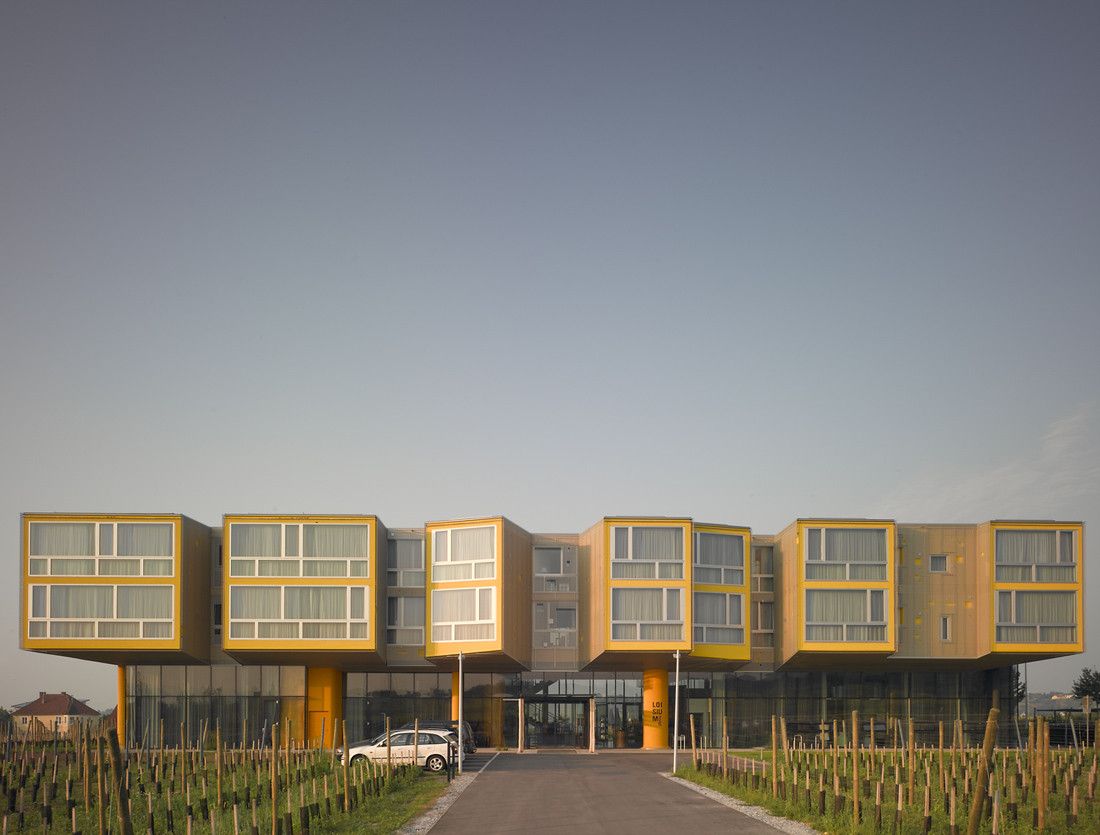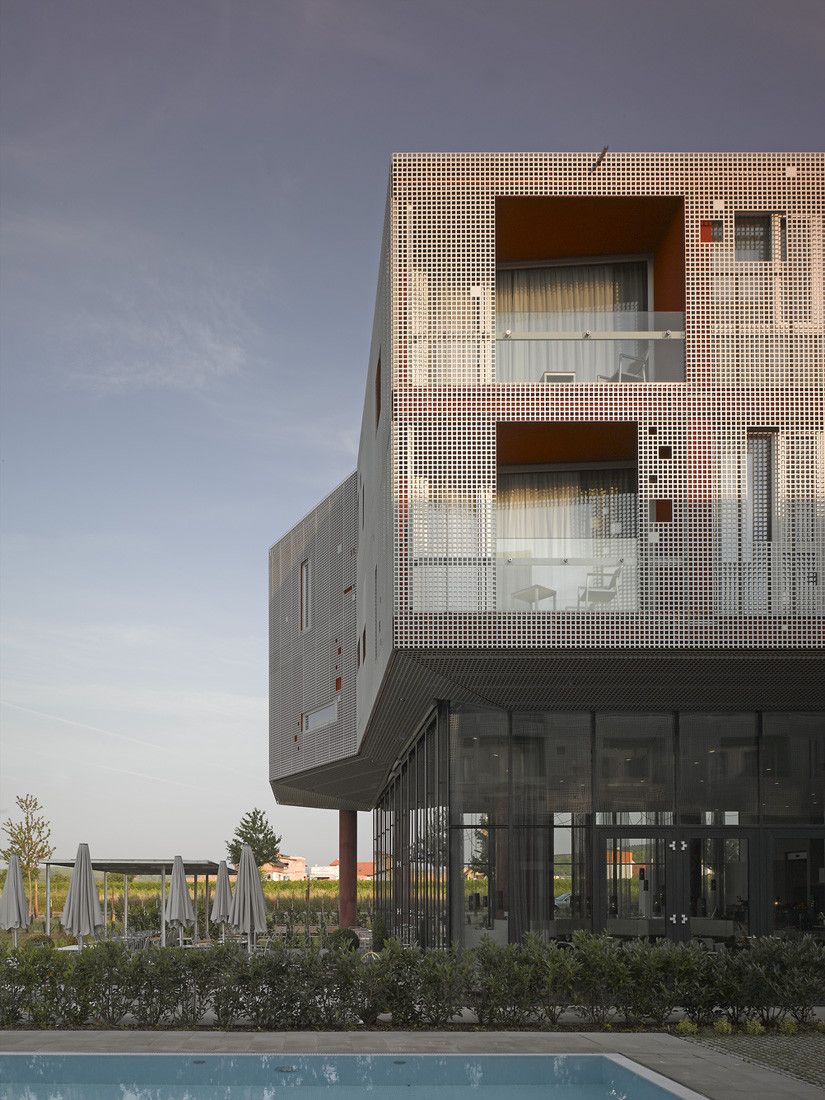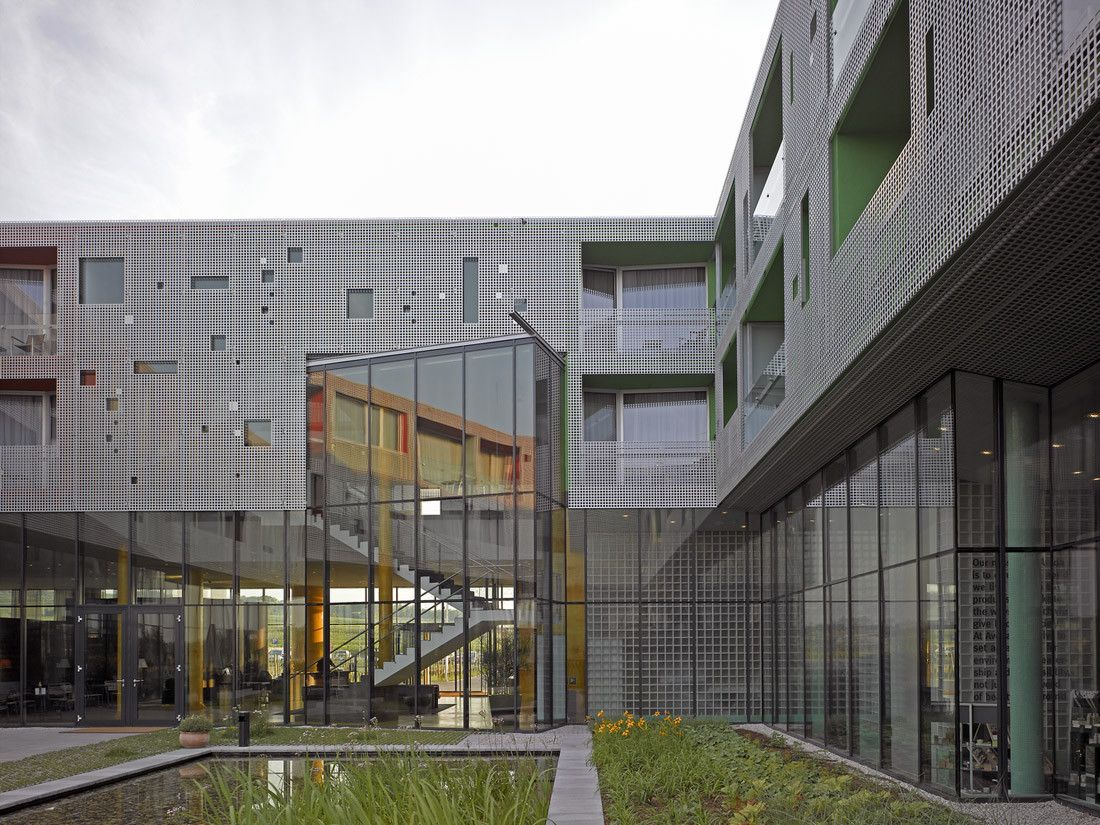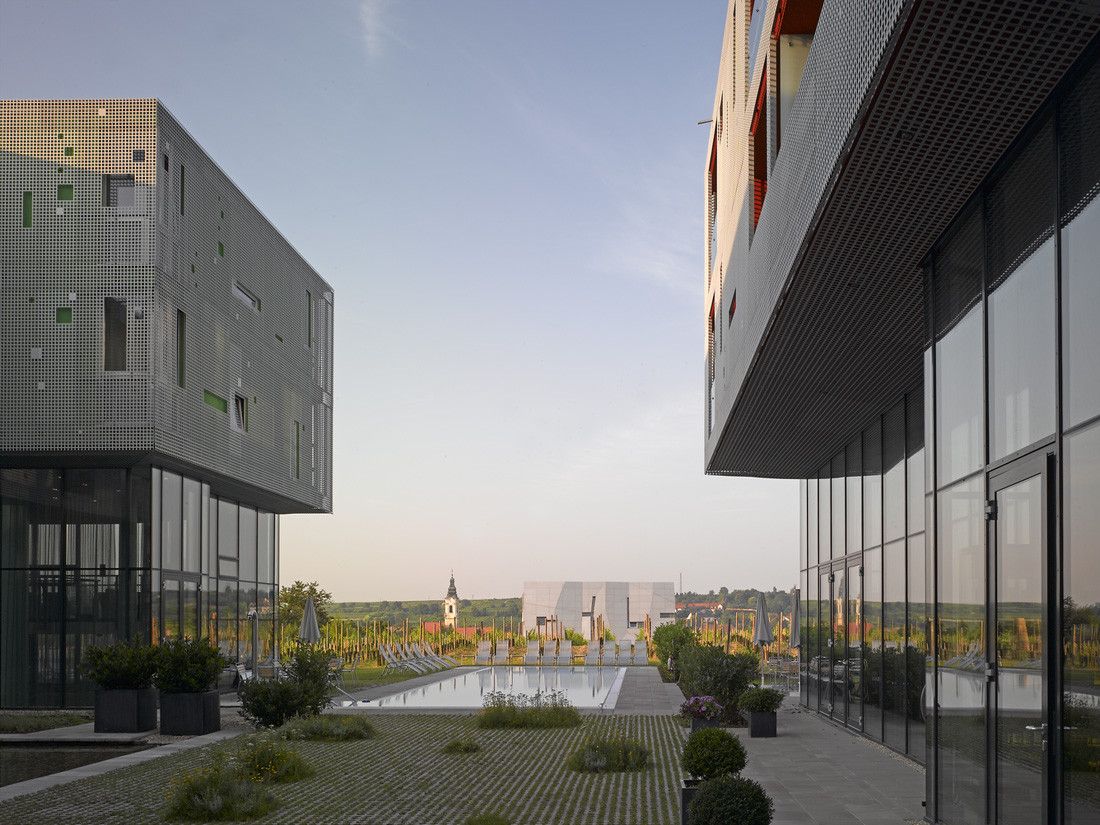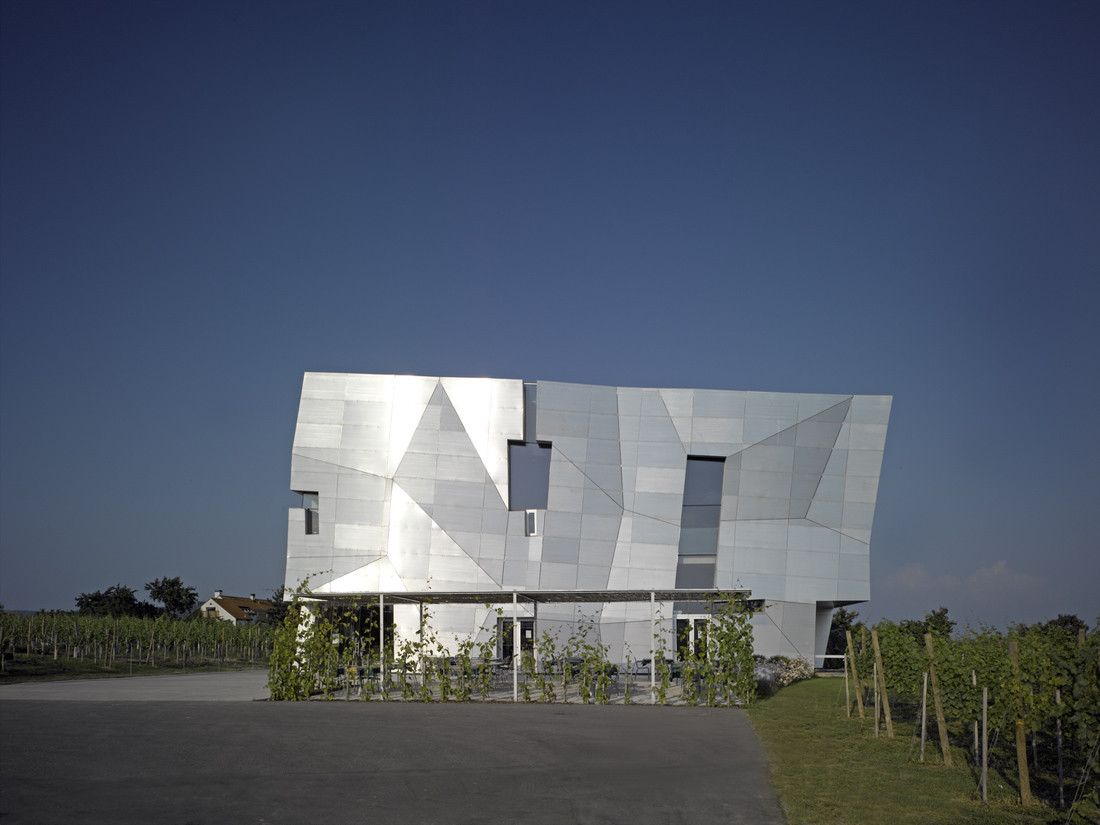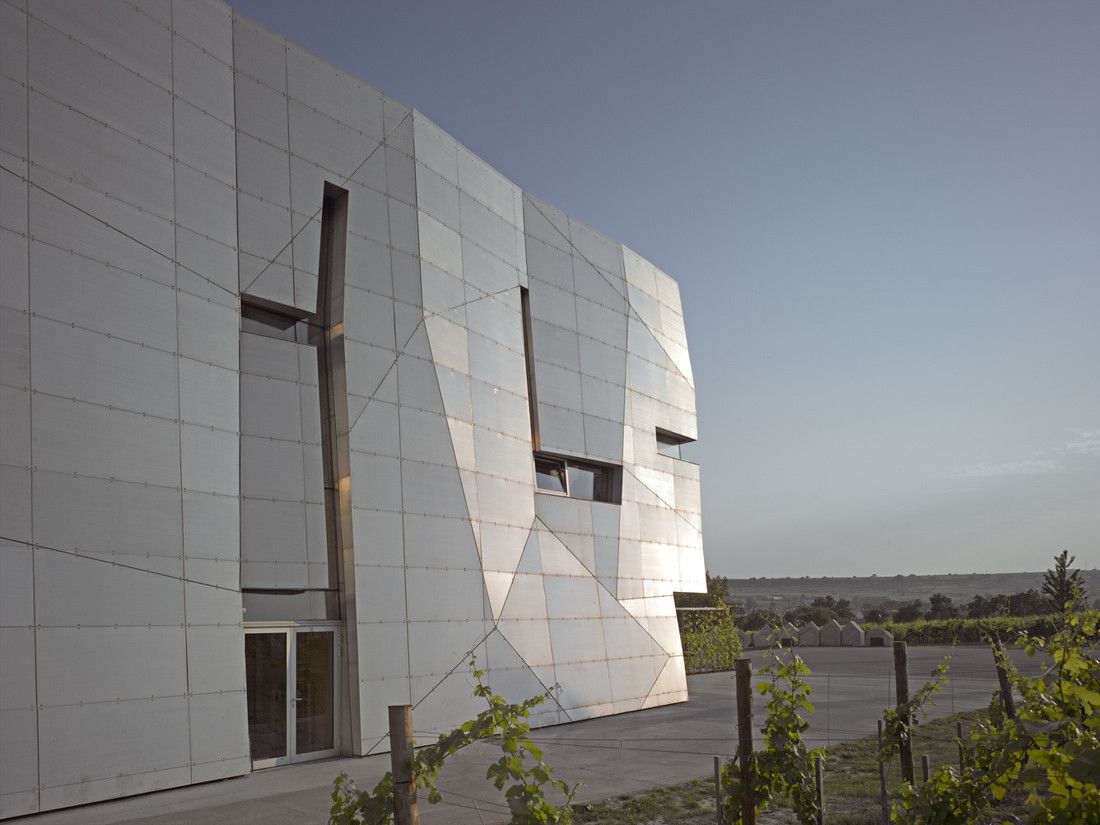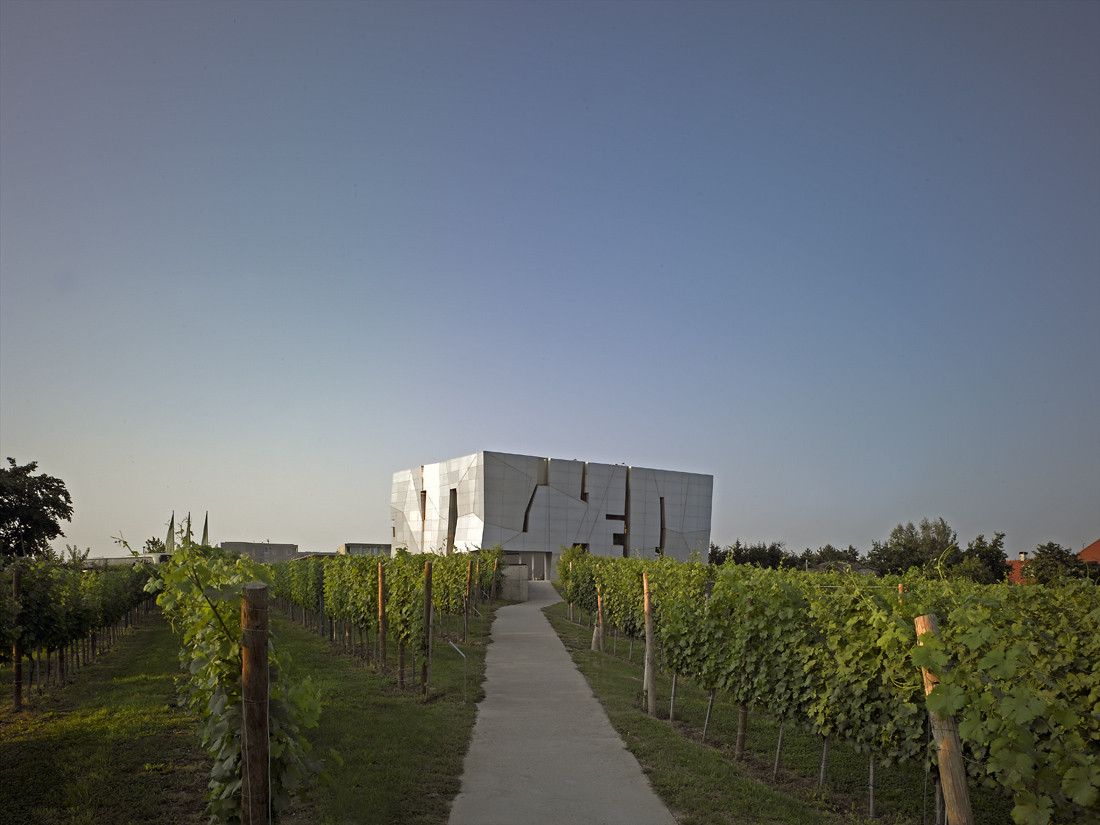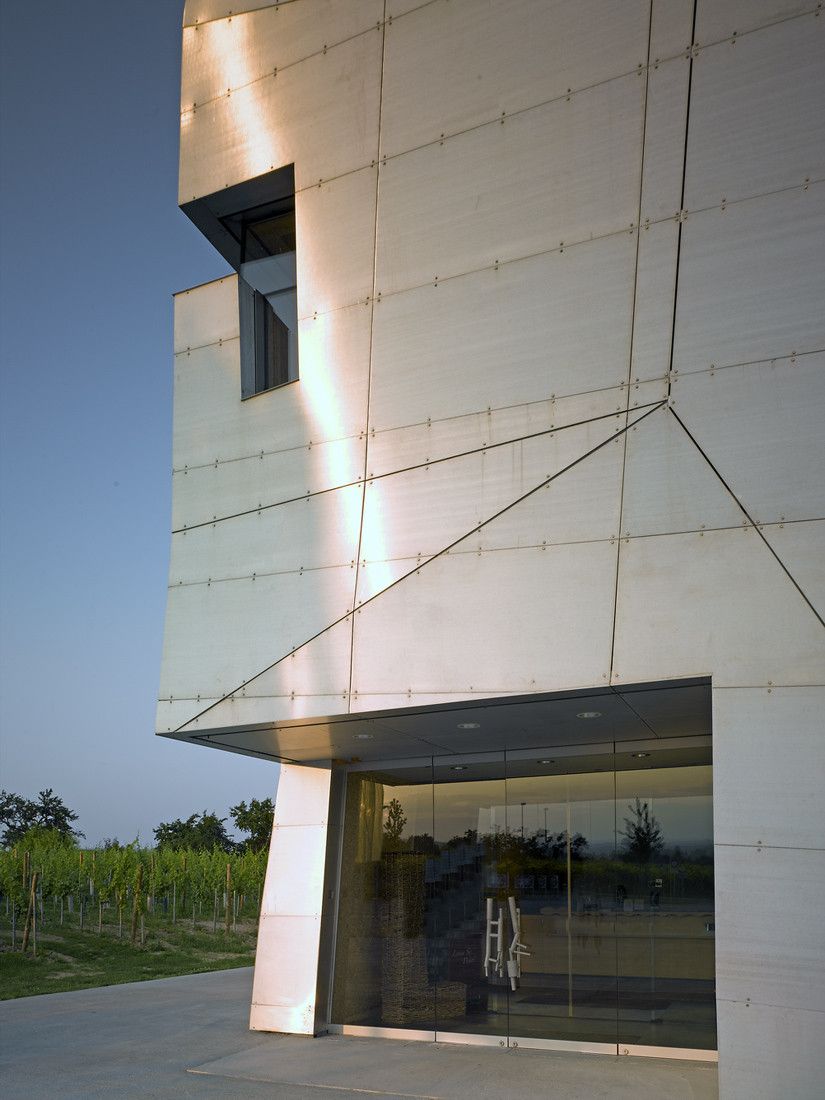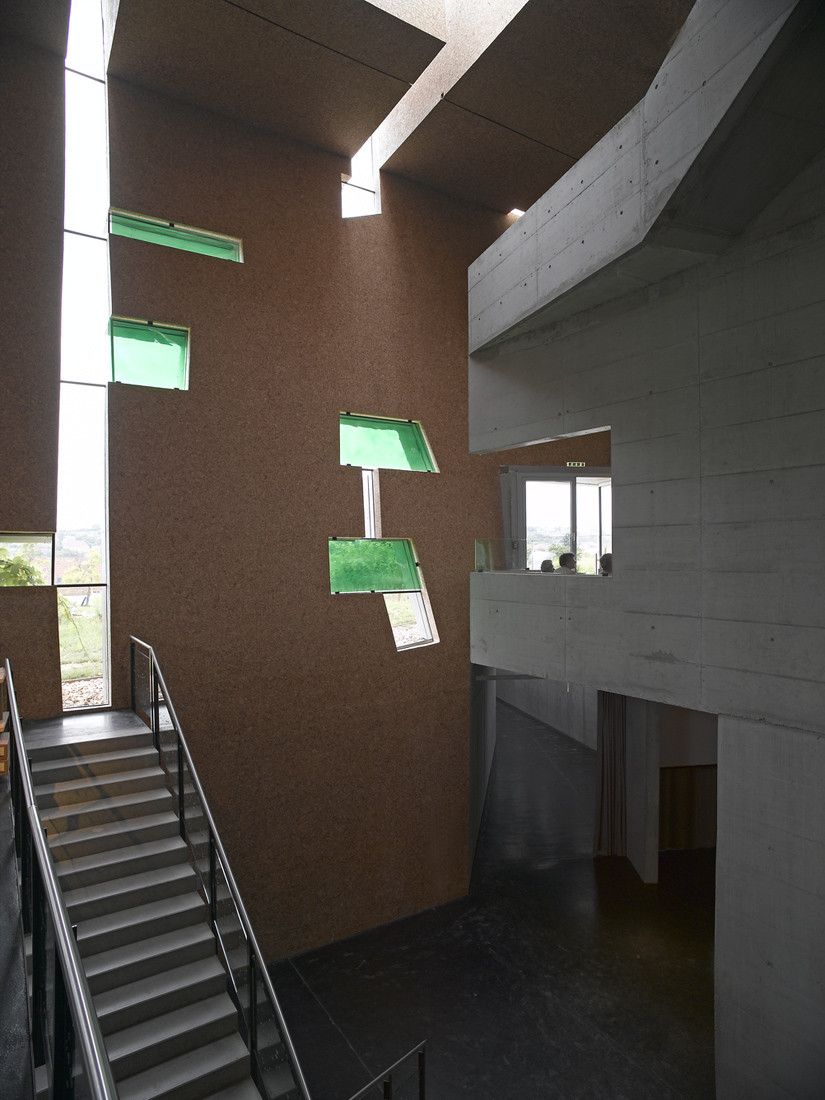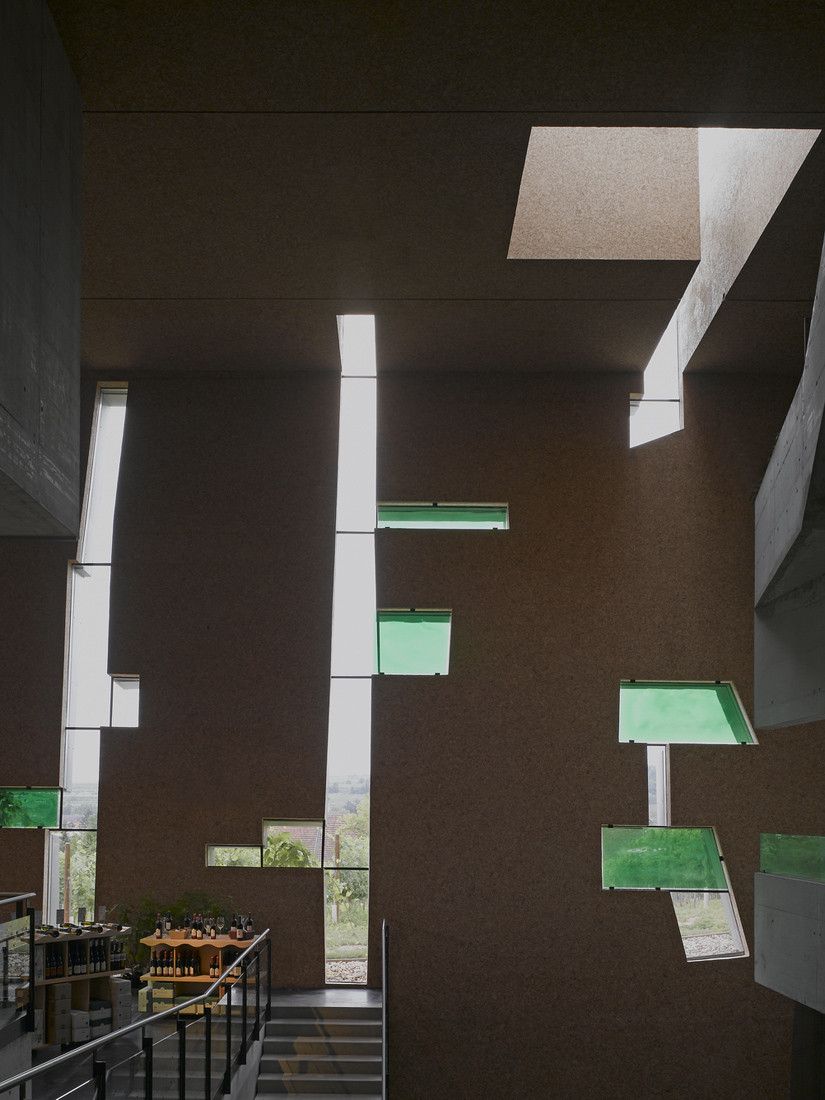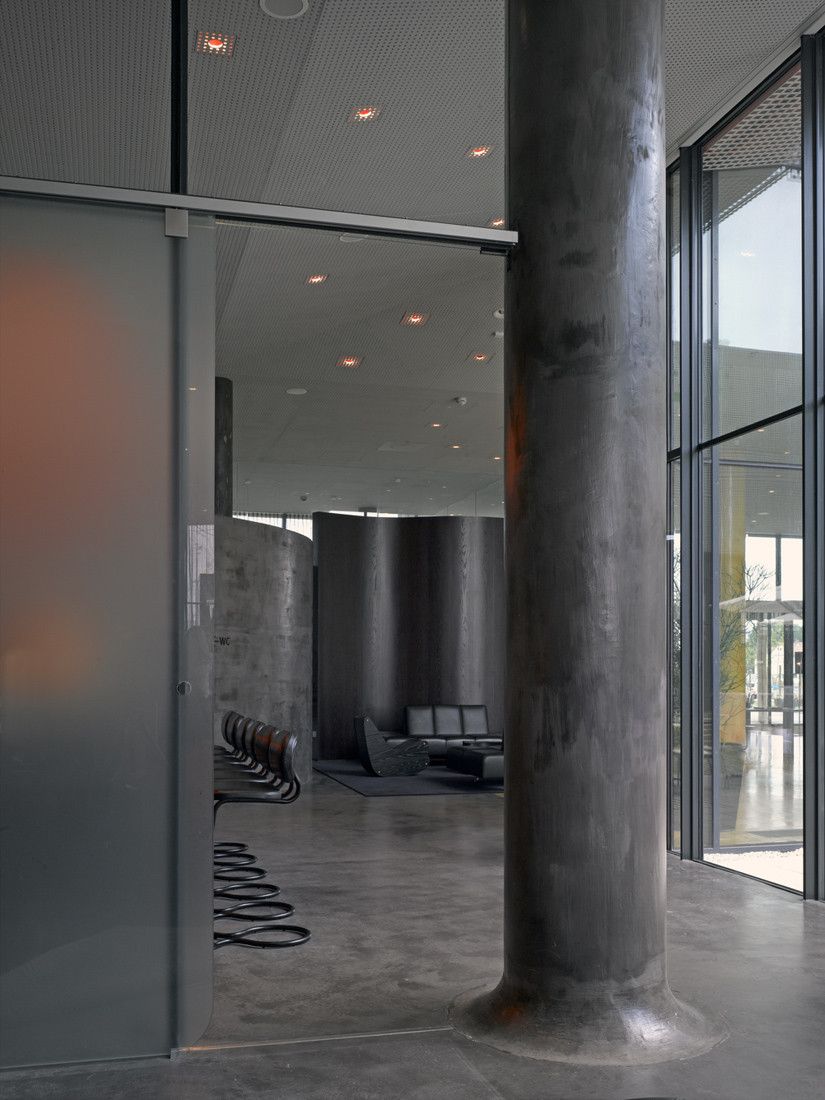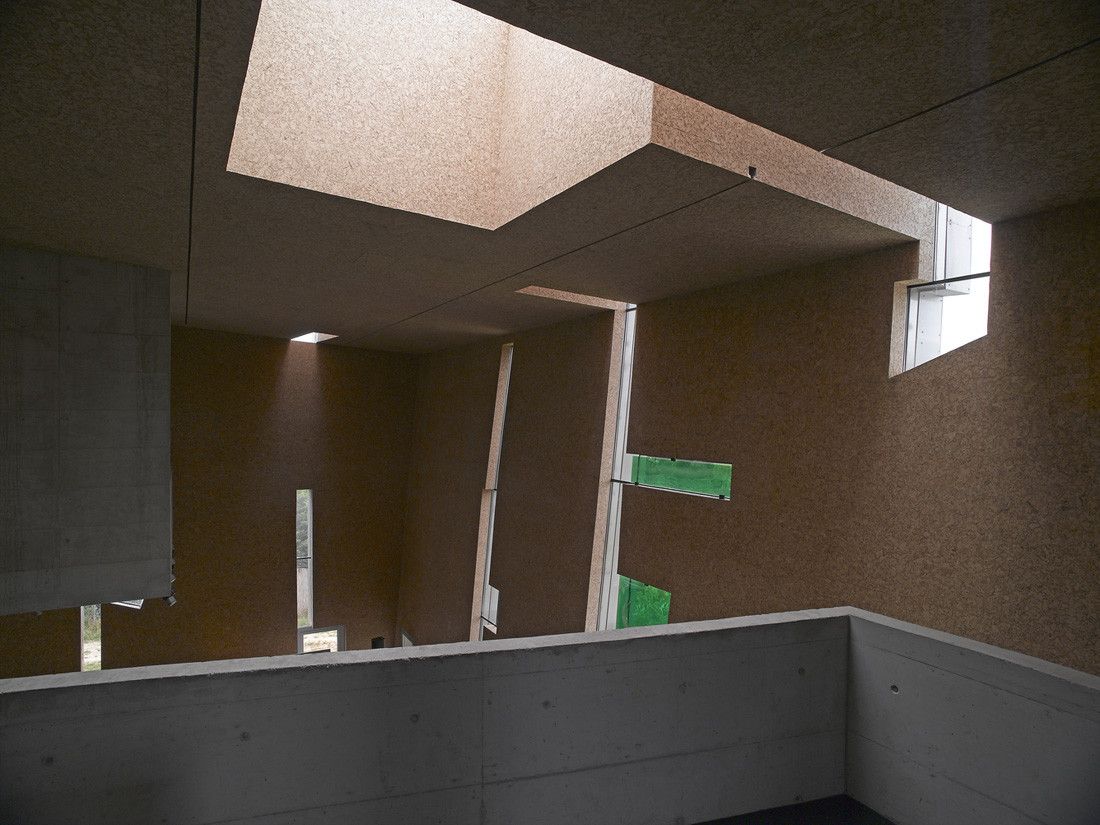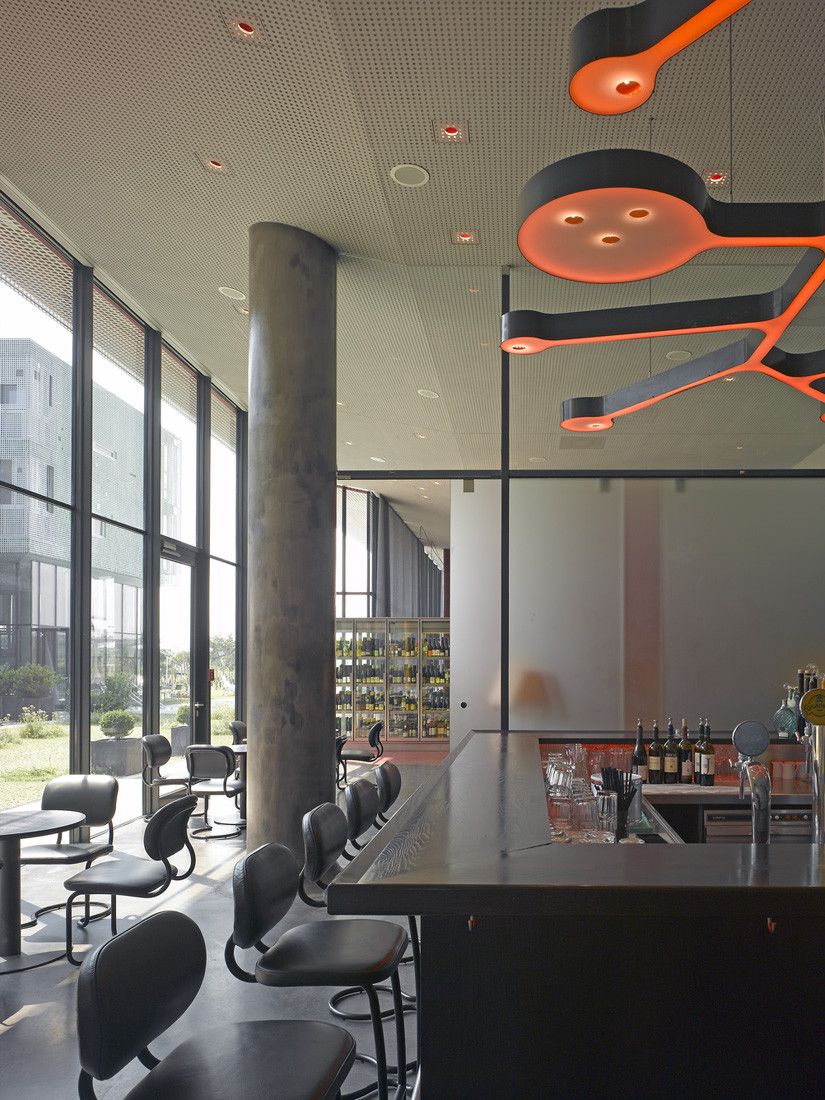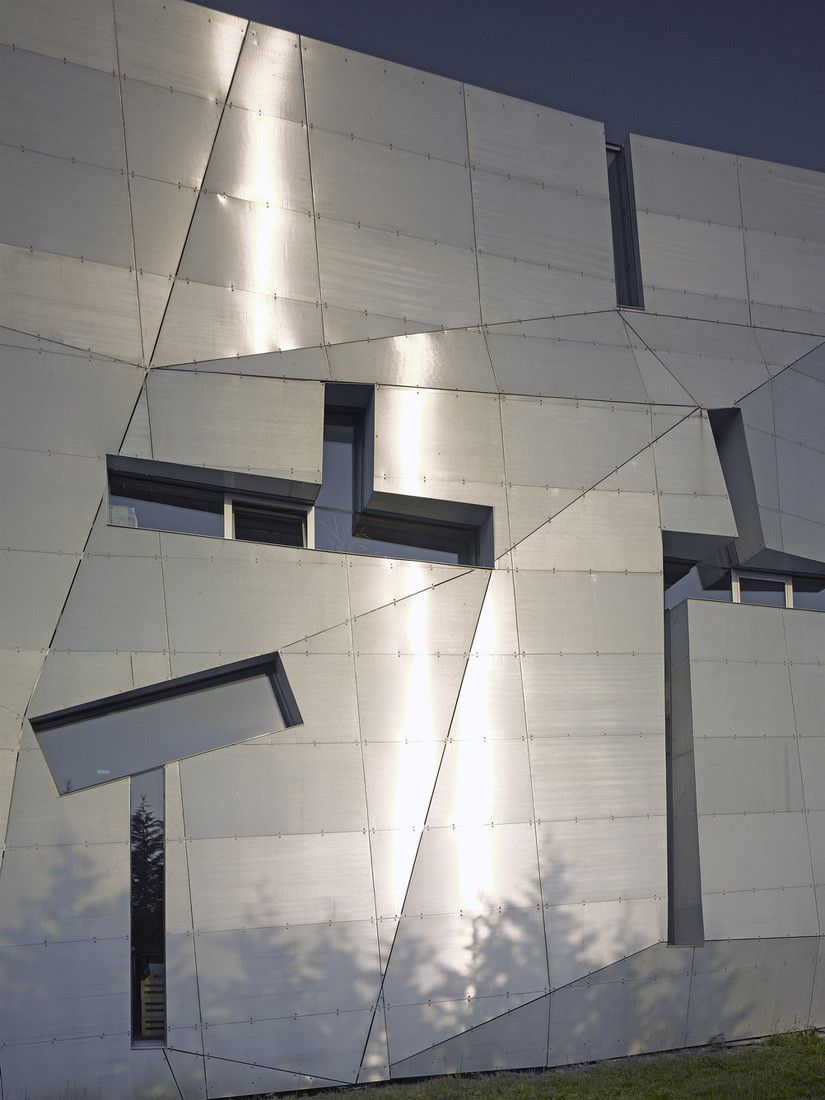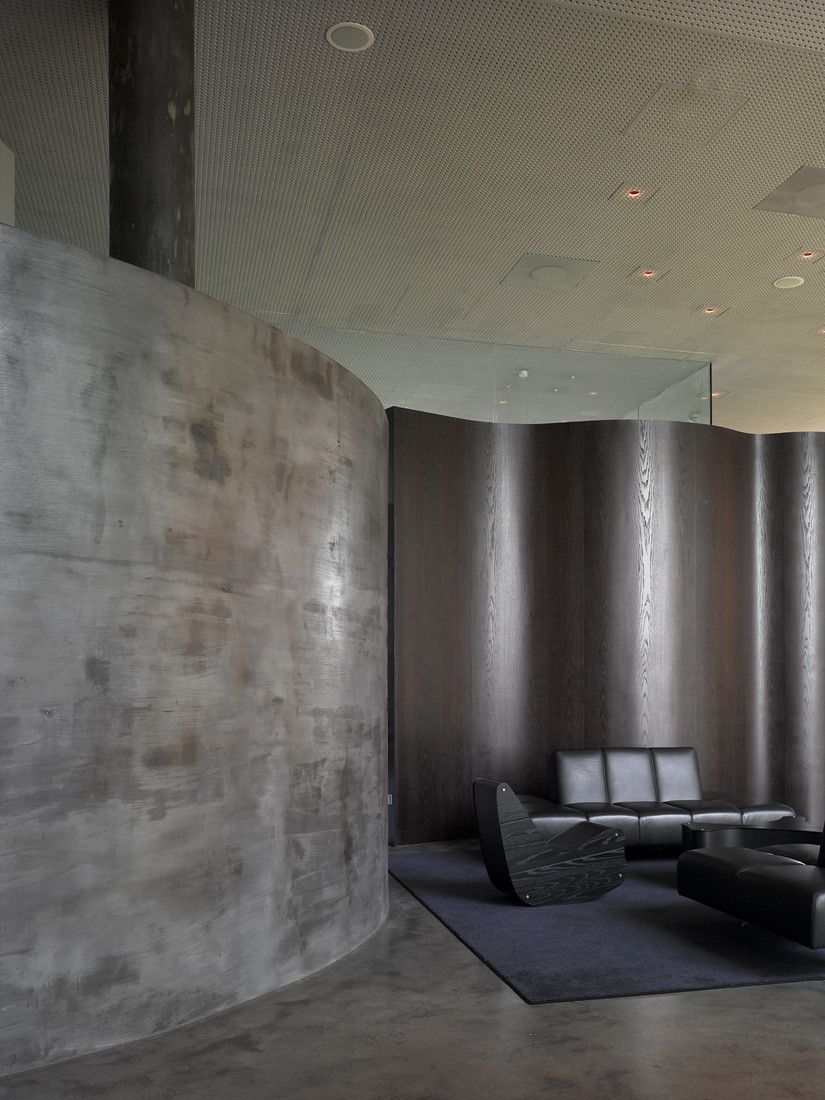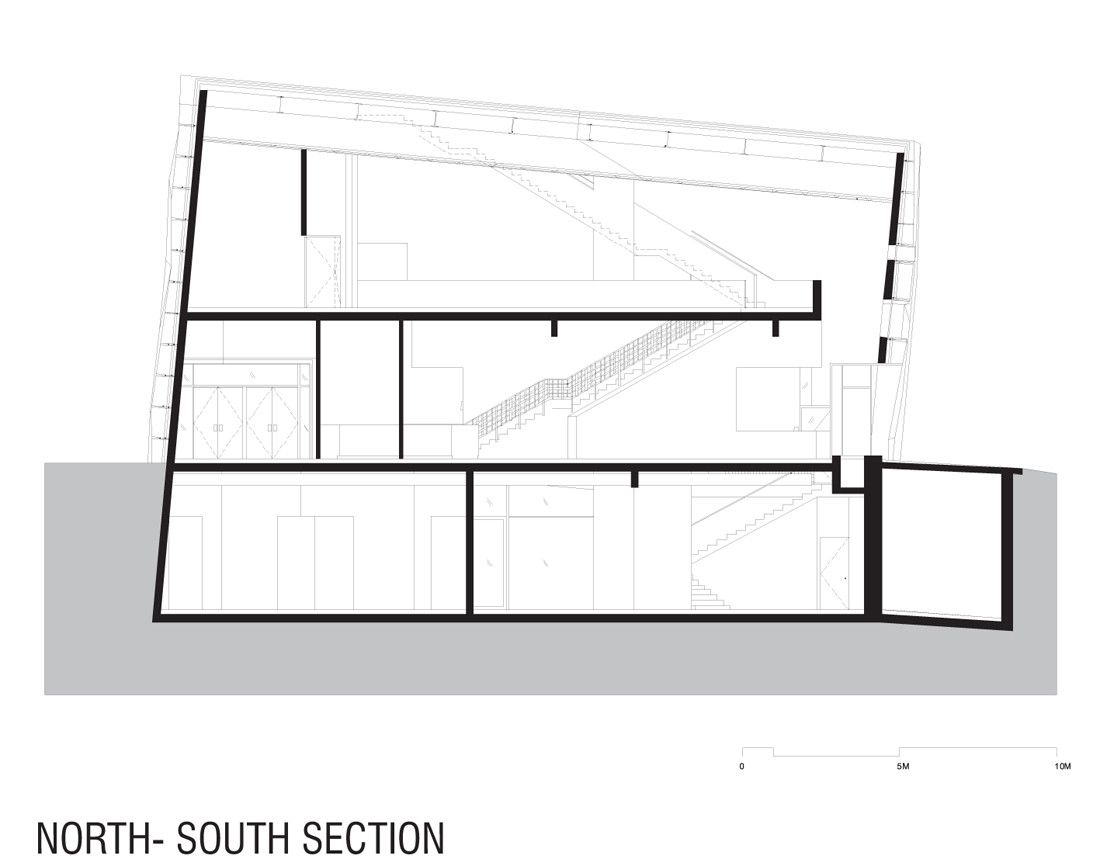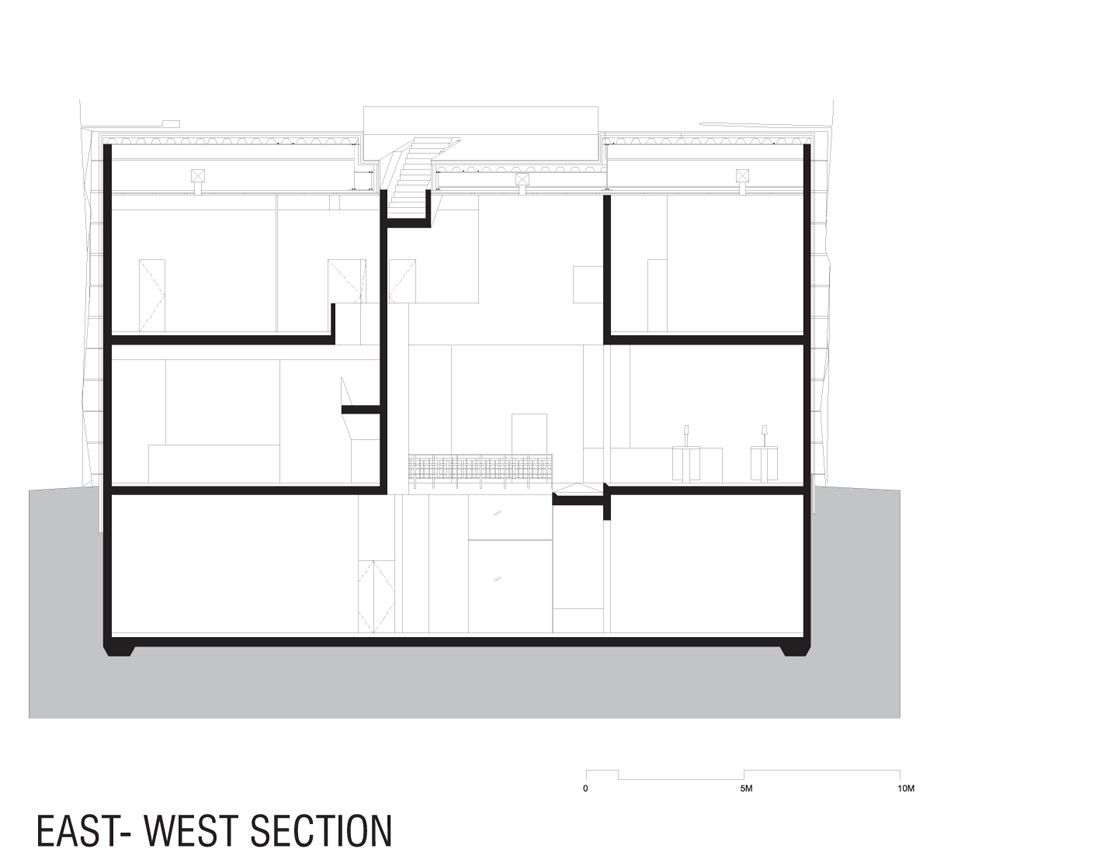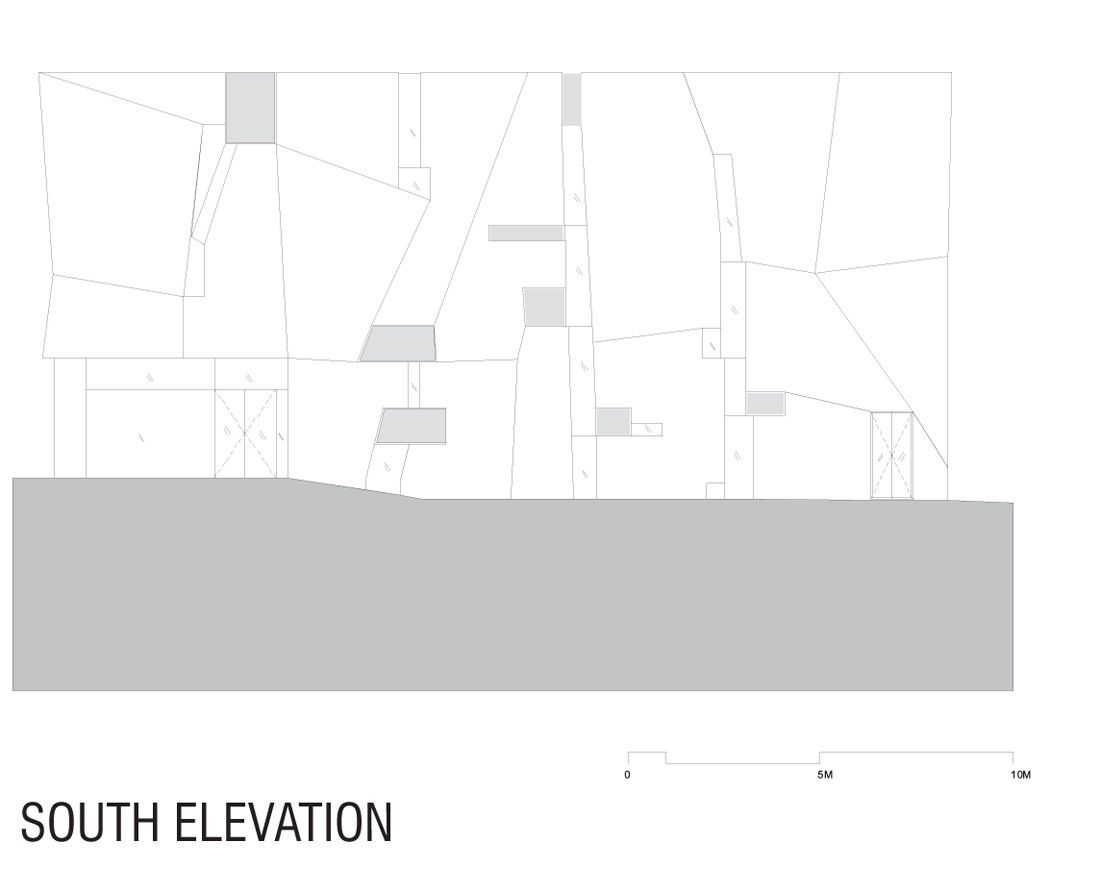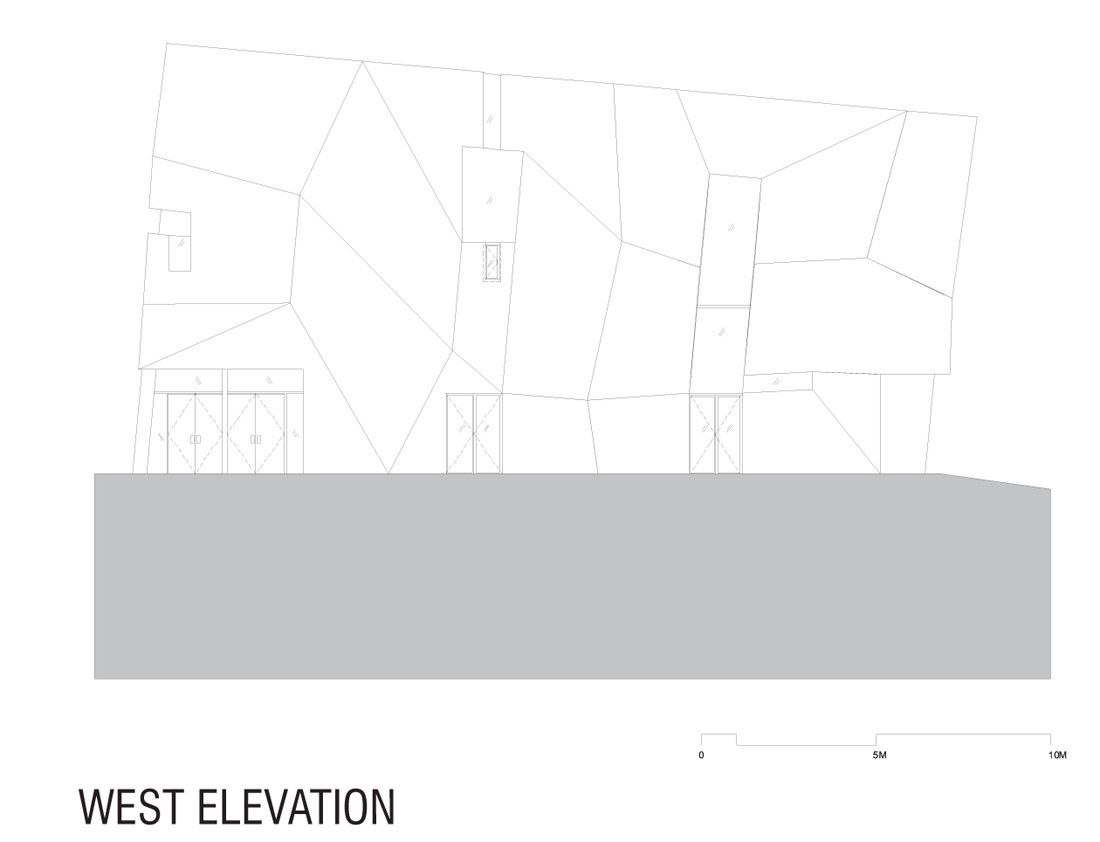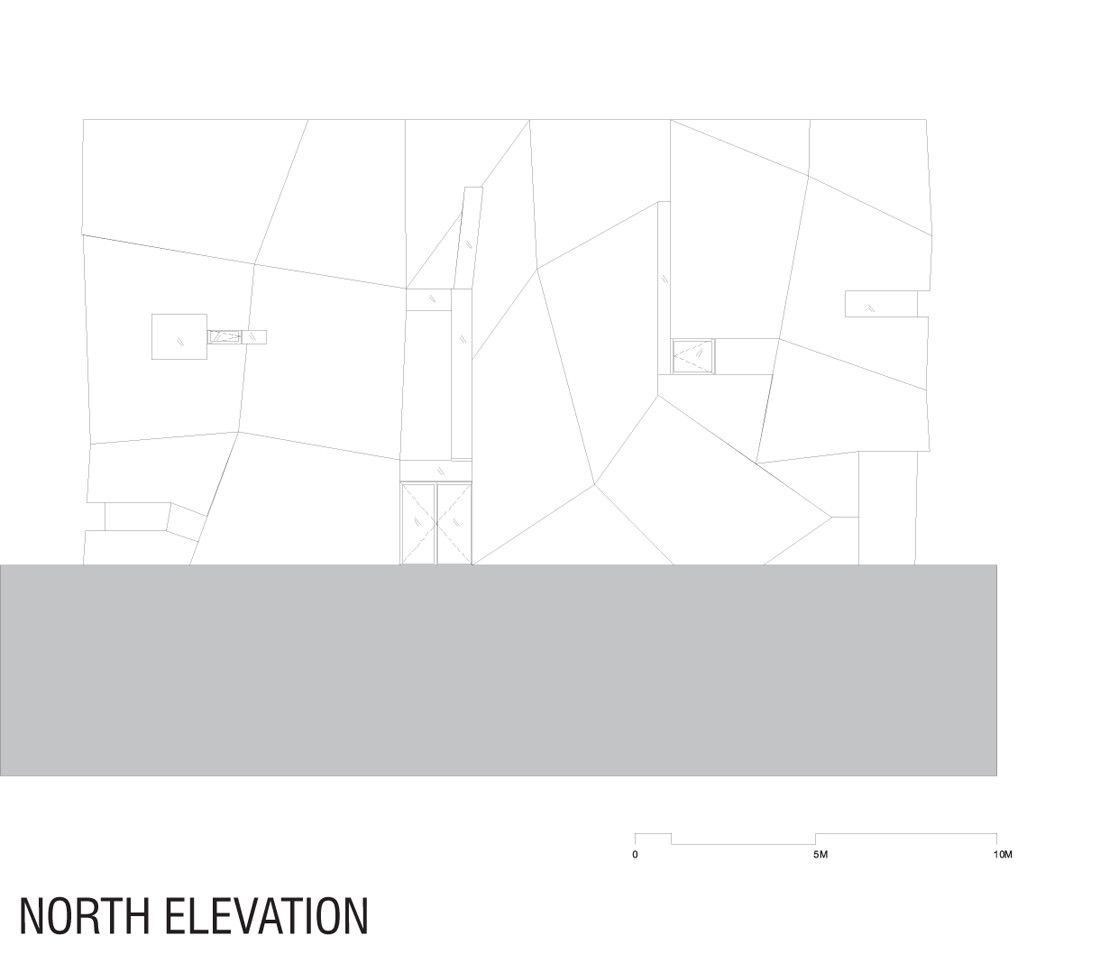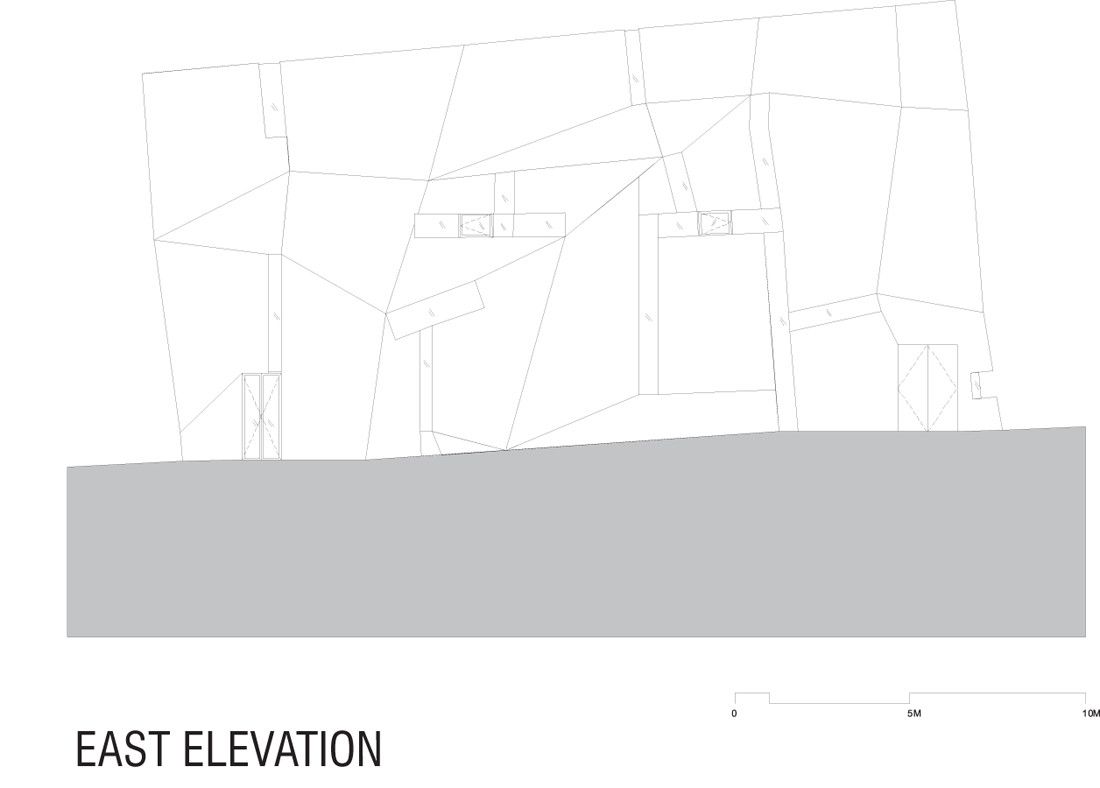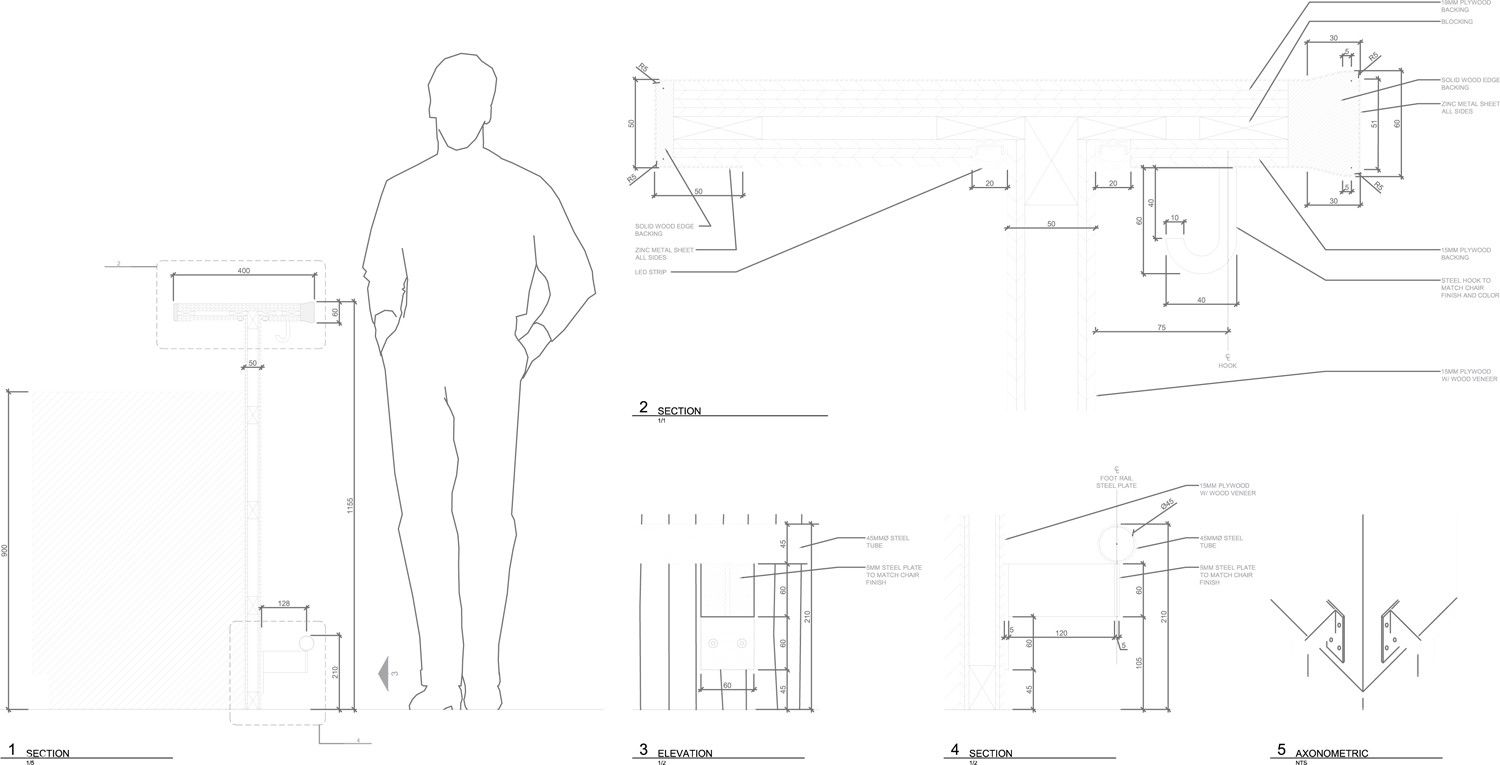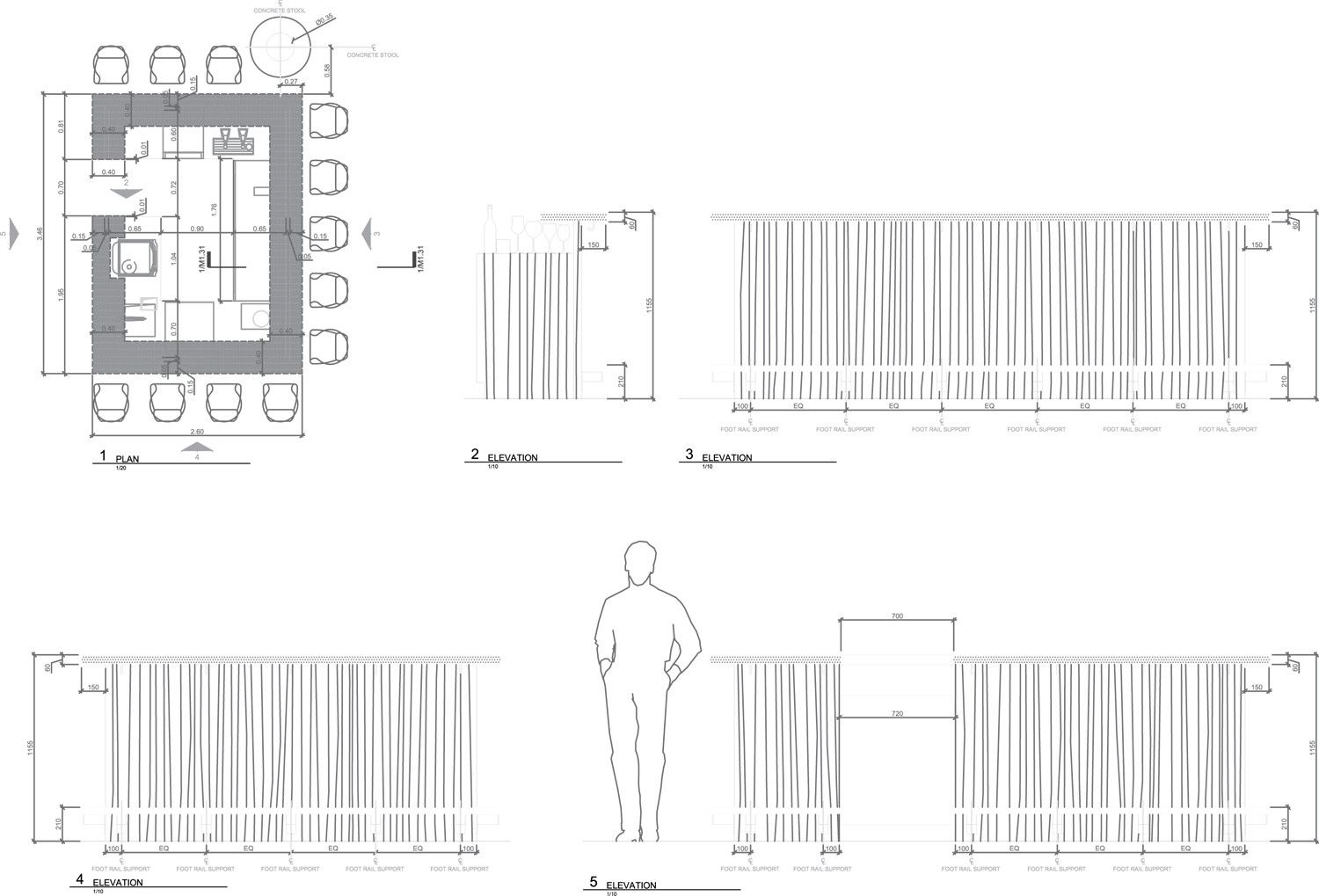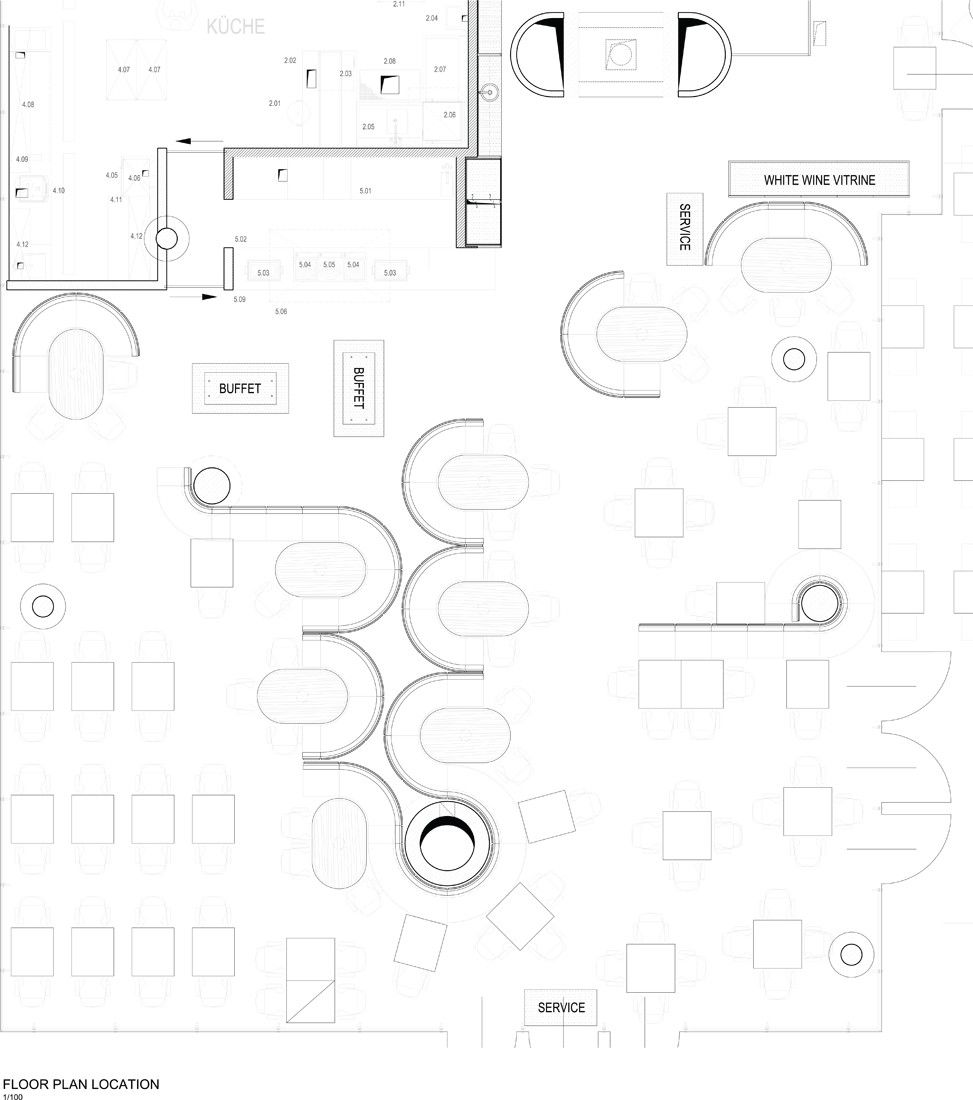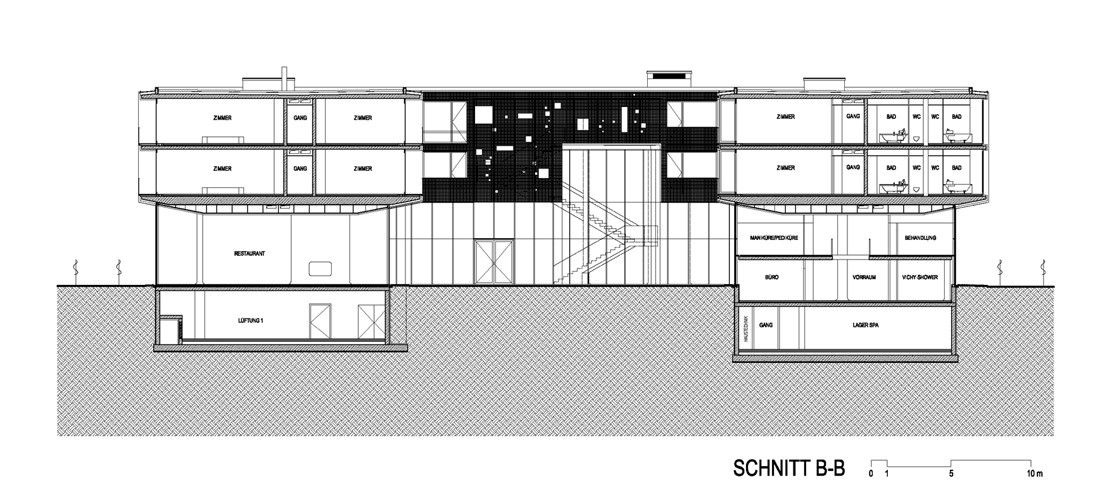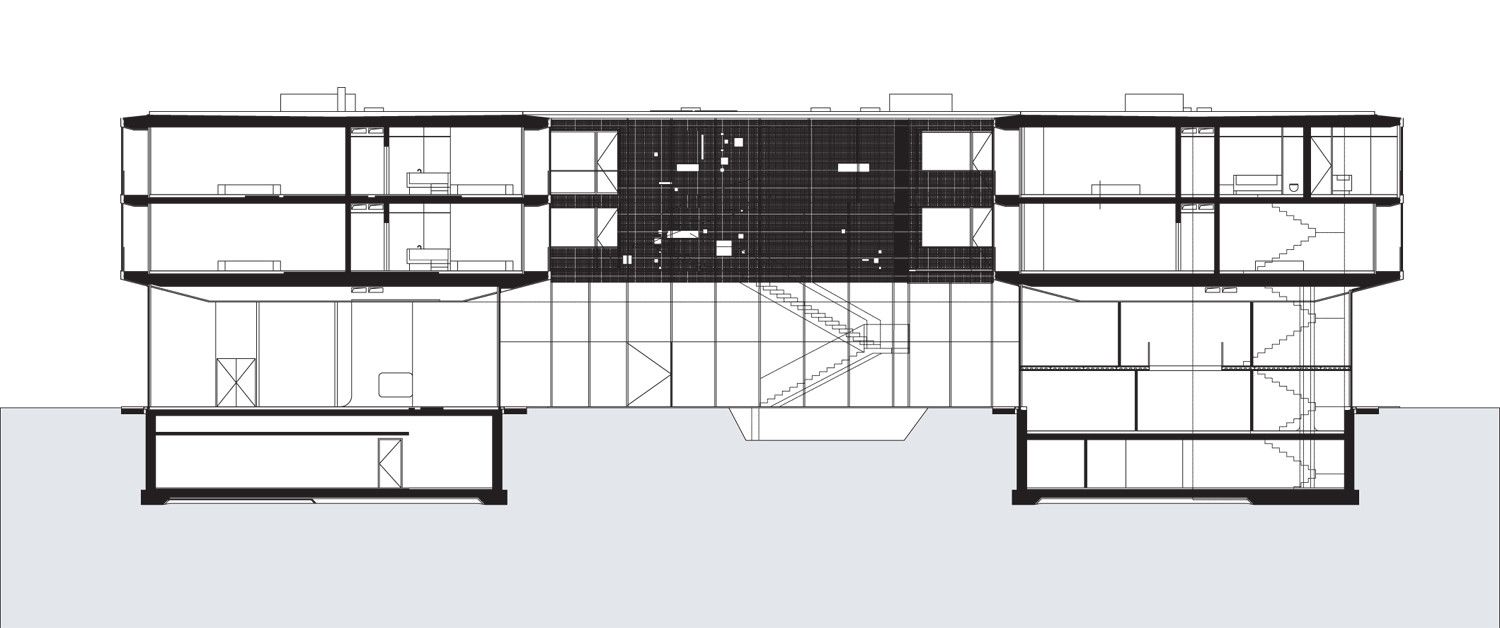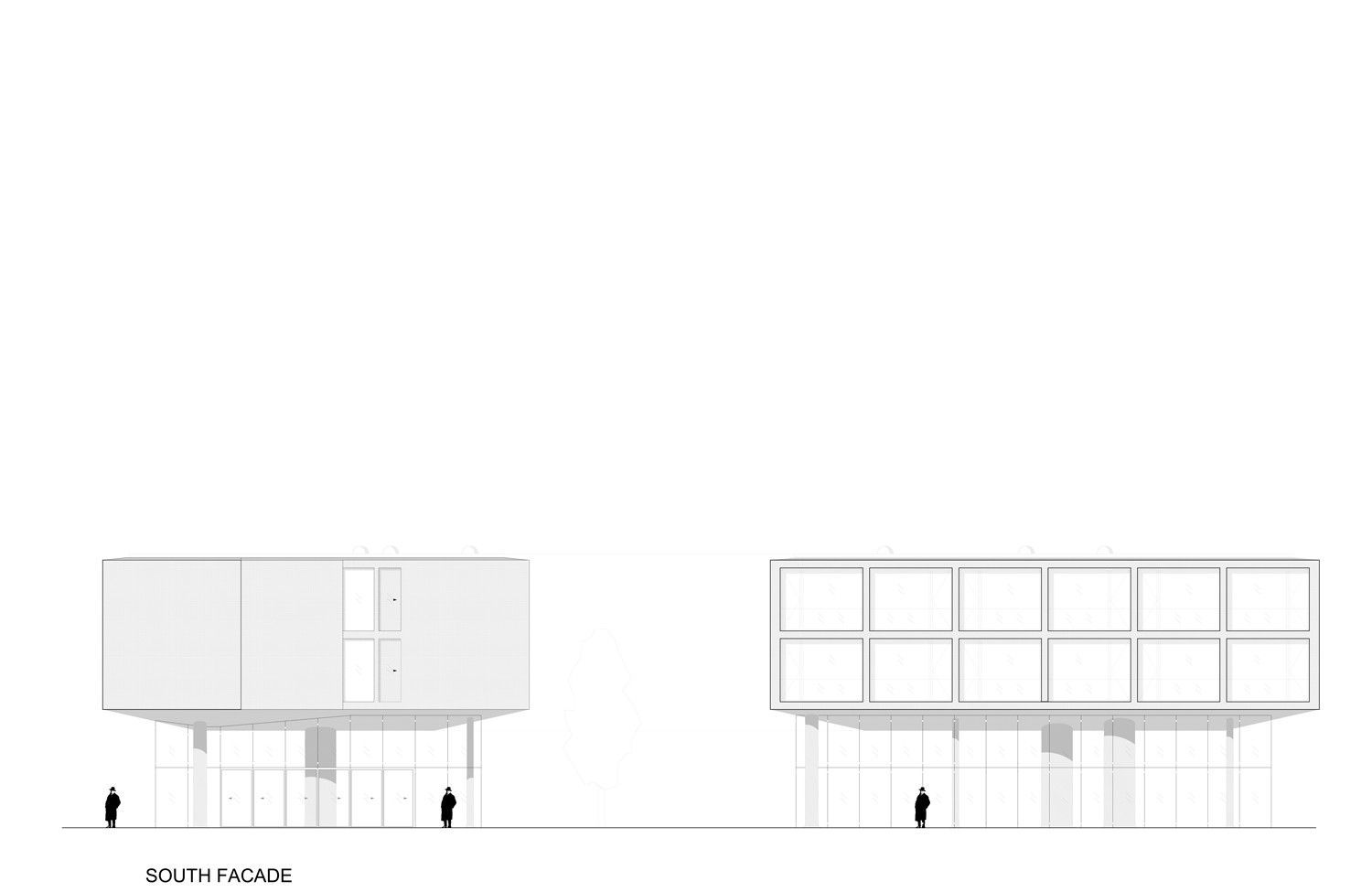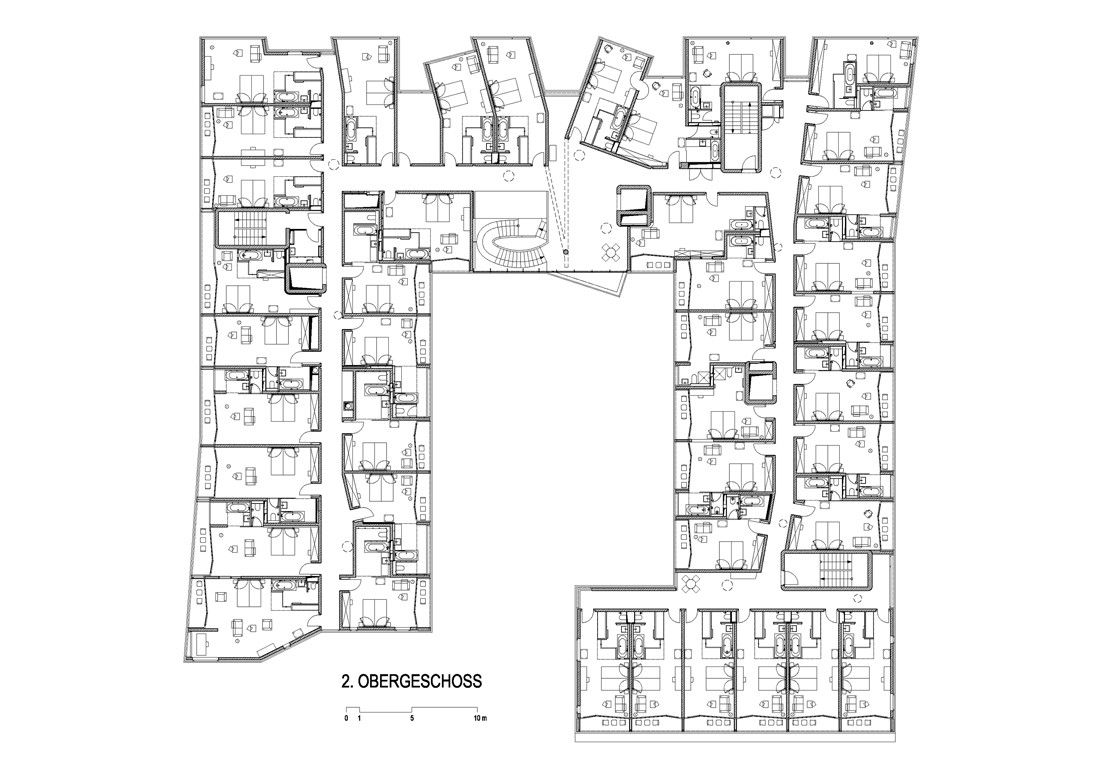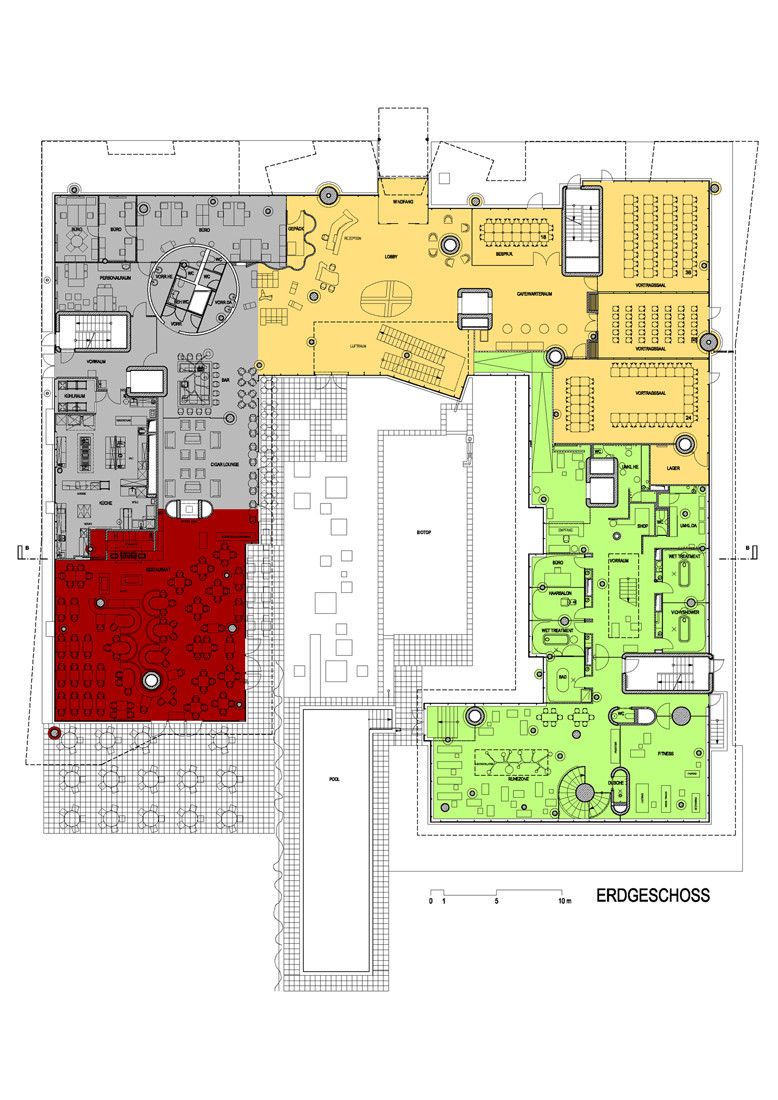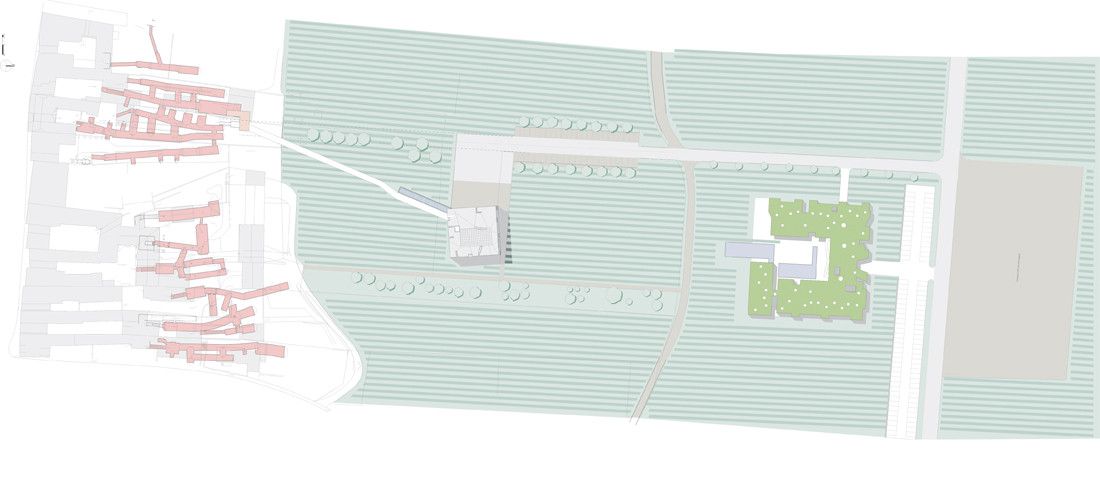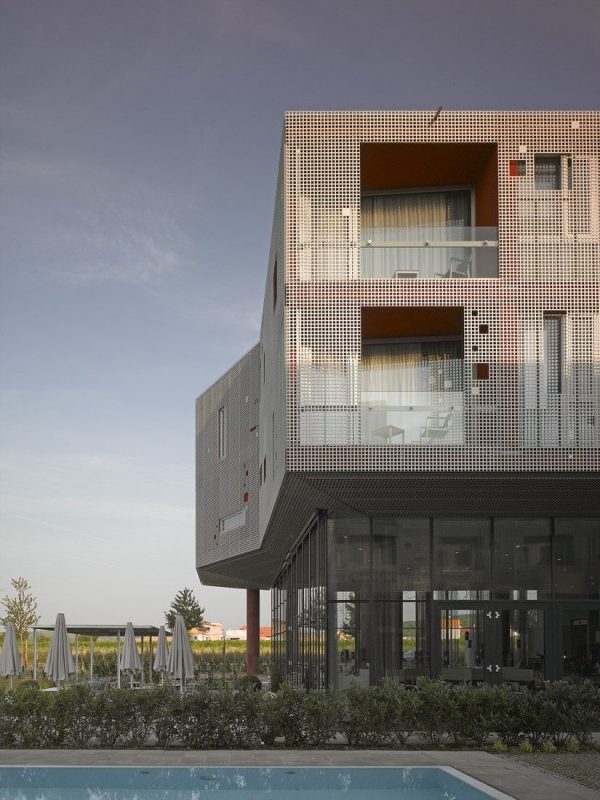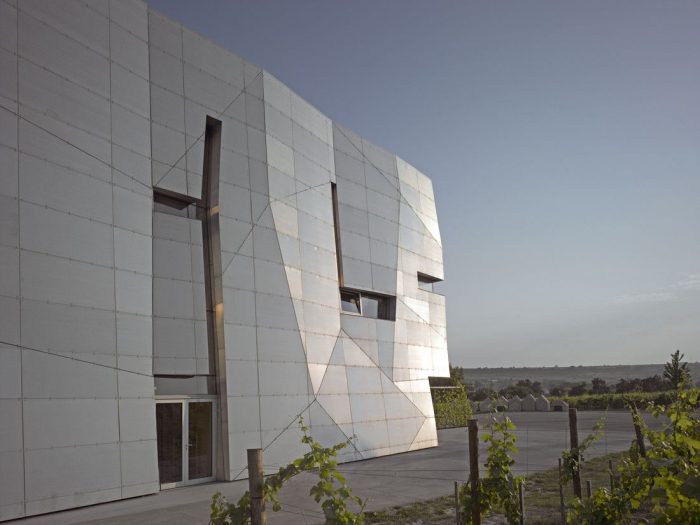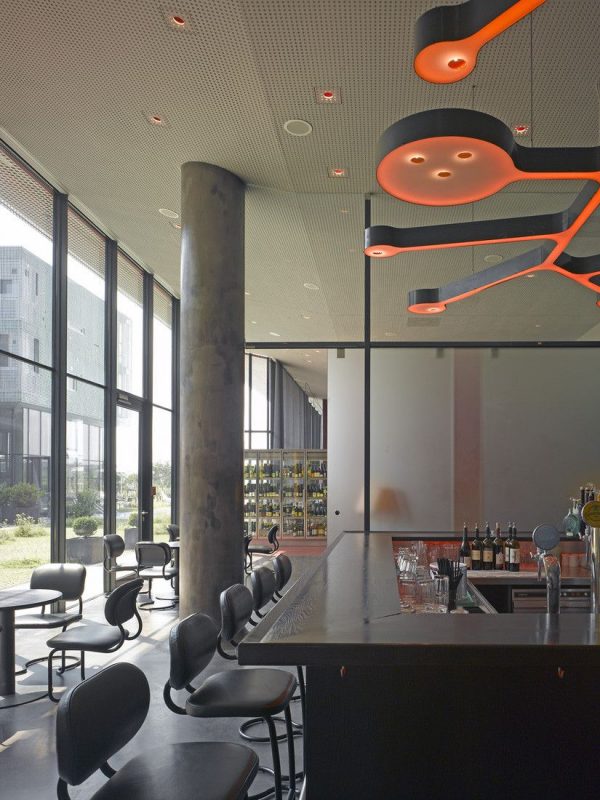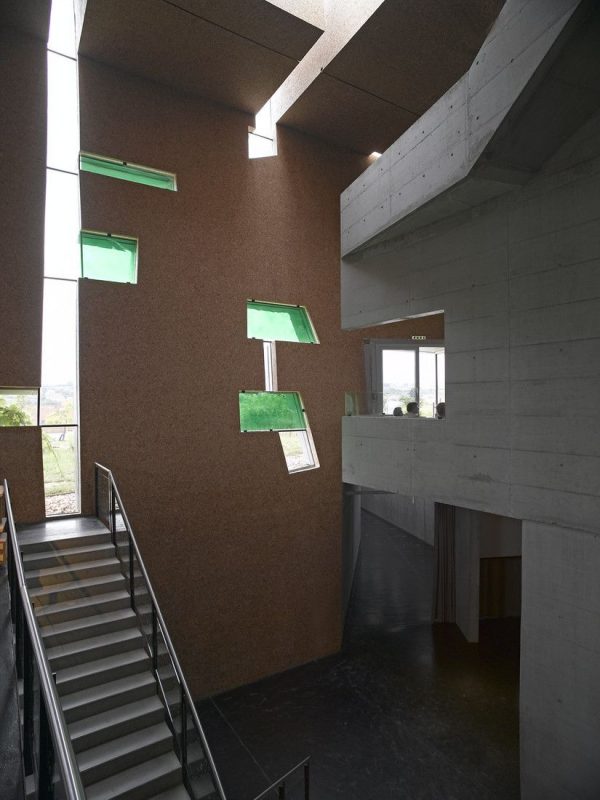On the edge of the picturesque town of Langenlois, one hour west of Vienna, a new wine center and visitors’ facility was built on a gently south-sloping vineyard to celebrate the rich local heritage of a magnificent wine vault system. This historic subterranean network, which includes 900 year old stone passages, underlies the urban plan of the town. The north-south axis of the network echoes that of the Baroque houses above and suggests the existence of a second town below that which is visible. The project is composed of three parts: the existing vaults, which were made accessible to visitors, the Wine Center, and the Loisium Hotel Wine and Spa Resort. The vault system’s geometry is transformed into an abstract three dimensional spatial language. This language forms the basis of the architecture of the Wine Center and Hotel, wherein each project element is derived from and related to the unique spaces of the vaults, while simultaneously having individual qualities of space, materials, light and experience.
The project is composed of three parts: the existing vaults, which were made accessible to visitors, the Wine Center, and the Loisium Hotel Wine and Spa Resort. The vault system’s geometry is transformed into an abstract three dimensional spatial language. This language forms the basis of the architecture of the Wine Center and Hotel, wherein each project element is derived from and related to the unique spaces of the vaults, while simultaneously having individual qualities of space, materials, light and experience.
The three elements of the project stand in relation to a geometric field of vineyards, the landscape of wine production :
1. Under the ground Existing Vaults
2. In the ground Wine Center and Ramp Connection
3. Over the ground Loisium Hotel Wine and Spa Resort
Like the grid of the city, the geometric spacing of the vineyard rows is continuous through the landscape connecting the three elements. The 53m X 53m square plan is aligned with the strict geometry of the surrounding vineyard rows. Offering a variety of activities and room types, the Loisium Hotel Wine and Spa Resort offers guests and visitors a variety of experiences. Earth like materials and palette combined with the views of the surrounding landscape create a strong connection and relationship of the hotel to its context. Public functions including the lobby, a wine themed restaurant, bar, cigar lounge, conference and meeting facilities, and wellness and spa area are located on the ground floor with views open to the surrounding vineyard.An inviting courtyard and terrace provides outdoor seating. 82 guest rooms are located in two upper floors. While the ground floor is transparent and open, the upper floors are more private.
Public functions including the lobby, a wine themed restaurant, bar, cigar lounge, conference and meeting facilities, and wellness and spa area are located on the ground floor with views open to the surrounding vineyard.An inviting courtyard and terrace provides outdoor seating. 82 guest rooms are located in two upper floors. While the ground floor is transparent and open, the upper floors are more private.
Wine Center :
The Wine Center’s design concept is derived from the geometry of the wine vaults. The simple 24m x 24m x 17m volume is cut and sliced to create a rich geometry. Some of the deep cuts are glazed in recycled bottle glass with rich green hues that cast their lustrous light on the interior.
Partially set into the earth of the vineyard, the slight forward tilt of the structure indicates its subterranean connection by ramp to the antique vault system. Upon entering, the visitor perceives a wonderful volume of space and steps out to the vineyard and past a café. A foot path leads down to the entrance of the vault system. The return journey is made through a ramped passage dappled with light refracted through a reflecting pool. The visitor then arrives on the lowest level of the building which houses a wine bar, a multi-purpose area and a shop with local products and books. Stairs and ramps connect to ground level with a generous wine shop and an upper floor with seminar rooms and offices. The roof terrace with spectacular views over the surrounding landscape and town can be made accessible on special occasions.
The visitor then arrives on the lowest level of the building which houses a wine bar, a multi-purpose area and a shop with local products and books. Stairs and ramps connect to ground level with a generous wine shop and an upper floor with seminar rooms and offices. The roof terrace with spectacular views over the surrounding landscape and town can be made accessible on special occasions.
Architects : Steven Holl
Project Year : 2005
Project Area : 7000.0 sqm
Local Architect : ARGE Architekten
Project Location : 3550 Langenlois, Austria
Mechanical Engineer : Altherm Engineering, A-Baden
Structural Engineer : Retter & Partner GmbH, A-Krems
Architects : Steven Holl (design architect), Christian Wassmann (project architect), Garrick Ambrose, Dominink Bachmann, Rodolfo Dias, Peter Englaender, Johan van Lierop, Chris McVoy, Ernest Ng, Olaf Schmidt, Brett Snyder, Irene Vogt (project team)
